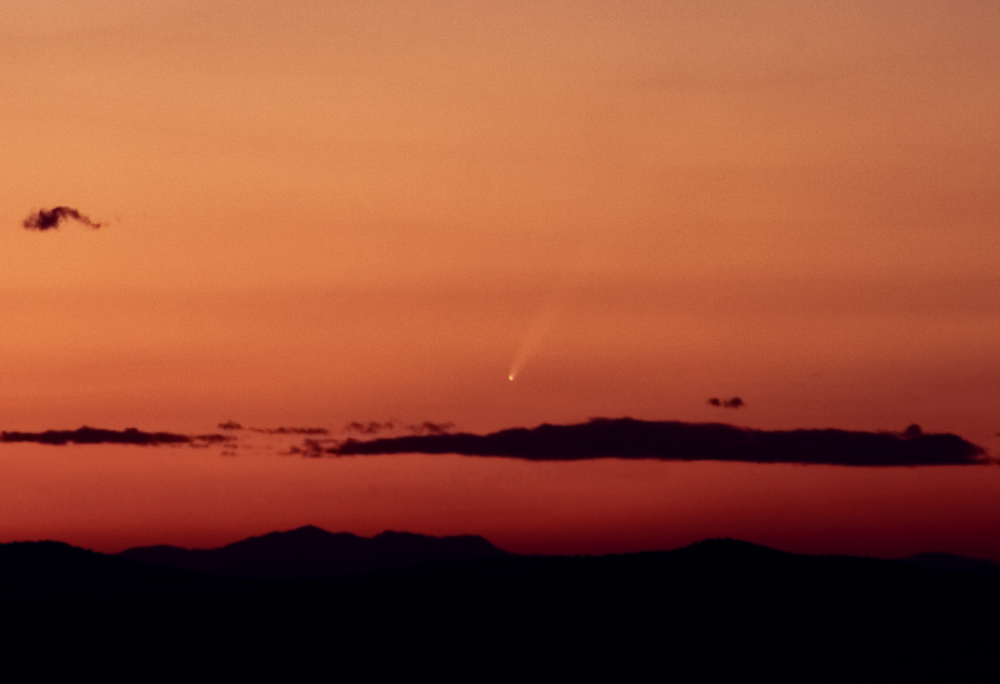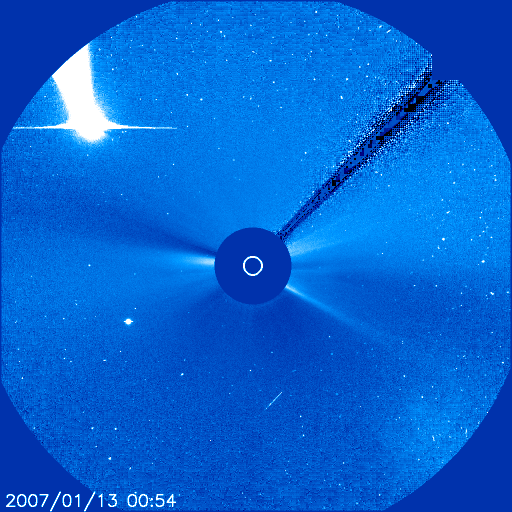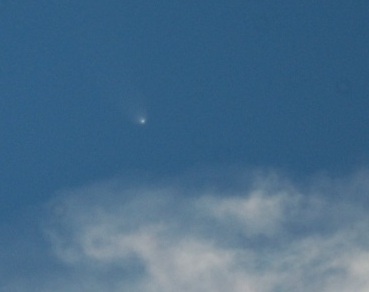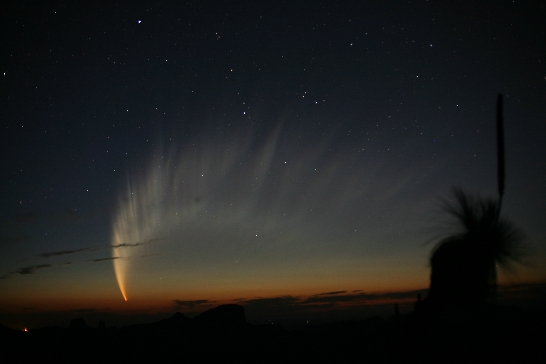
Perihelion: 2007 January 12.80, q = 0.171 AU
After the LIncoln Near-Earth Asteroid Research (LINEAR) program based in New Mexico became operational in early 1998, the discovery rate for both asteroids (including, certainly, near-Earth asteroids) and comets exploded dramatically. This trend has continued on up to the present day with the various subsequent surveys that have come on-line, and this situation should remain for the foreseeable future.
Even with all the various surveys that have been going on, the sky coverage has not been 100% complete. One of the biggest gaps in the coverage involves the fact that essentially all of the initial surveys were based in the northern hemisphere, and thus those regions of the sky accessible only from the southern hemisphere remained largely uncovered. There had been a partial survey, of sorts, based at Siding Spring Observatory in New South Wales, that involved photographic plates taken with the 1.2-meter U.K. Schmidt telescope there. During the early- to mid-1990s astronomer Rob McNaught, a native of Scotland who had relocated to the Siding Spring area in 1984, was tasked to scan these plates specifically in search of near-Earth asteroids, and to perform any necessary follow-up work. Up until 1996 when the Australian government terminated funding for this program, it racked up a rather impressive list of discoveries not only of near-Earth asteroids but also of comets and supernovae. Perhaps the most notable discovery was that of the “asteroid” now known as (5335) Damocles in 1991; this was the first-known representative of the objects now called “Damocloids” that are discussed in a future “Special Topics” presentation.
The southern hemisphere’s gap in sky coverage was finally filled in 2004 when the Arizona-based Catalina Sky Survey, with funding from NASA, initiated the Siding Spring Survey, which utilized CCDs in a manner like those used by the northern hemisphere programs. The primary observers for the Siding Spring Survey were McNaught and Australian amateur astronomer Gordon Garradd, and up until the time that the NASA funding ran out in mid-2013 the Siding Spring Survey produced a large number of asteroid and comet discoveries. When his discoveries from the Siding Spring Survey are combined with those he made during the previous photographic survey, together with some discoveries he made on his own, McNaught has discovered a total of 82 comets which carry his name, the most of any human being.

McNaught discovered what would become the brightest comet from the Siding Spring Survey, and, indeed, the brightest comet of the 21st Century thus far, on August 7, 2006. Initially it was a rather dim object near 17th magnitude, and although it began to attract interest once orbital calculations revealed the small perihelion distance, it did not seem to be especially bright intrinsically, and thus there was not much reason for optimism of a bright display. The comet brightened somewhat rapidly, however, and I successfully picked it up visually at 14th magnitude in mid-September; when it disappeared into evening twilight two months later it had brightened to near magnitude 9.5.
By the latter part of December Comet McNaught was near conjunction with the sun, however since it was then north of the sun observers in the northern hemisphere, particularly those in far northern latitudes who experienced a longer time between sunset and comet-set and thus a darker sky in which to observe, began to pick it up at around 4th magnitude. It brightened rapidly from that point, being close to 2nd magnitude by New Year’s Day 2007 and as bright as magnitude 0 or -1 a week later. While observers at the far northern latitudes got a moderately good show as the comet approached perihelion on January 12, those of us at more temperate latitudes had a much more difficult time seeing it, and at best could only detect it very close to the horizon in very bright twilight.

As Comet McNaught passed through perihelion it passed between the sun and Earth, thus exhibiting very large phase angles. A comet, especially one with a high dust content as Comet McNaught appeared to have, will accordingly experience an enhanced brightness due to the phenomenon of “forward scattering of sunlight,” which anyone who has driven into a sunset with a dusty windshield has experienced. When it was at perihelion Comet McNaught was only 7 degrees from the sun but at a phase angle of 135 degrees, and for a few days was bright enough to be visible during daylight. Brightness measurements ranged from magnitude -4 to -6 and numerous observers reported naked-eye daytime sightings, and it was a relatively impressive object when viewed telescopically.
After perihelion the comet plunged southward, and by the 17th had become visible from the southern hemisphere during dusk. Over the next couple of weeks it was a spectacular object in the southern hemisphere’s evening sky, being initially as bright as magnitude -2 although fading to magnitude 0 by the 22nd. It exhibited a bright dust tail at least 25 to 30 degrees long that showed a distinct curvature through a 90-degree angle, and that also exhibited numerous “synchronic bands” that various other dusty comets in the past have exhibited. While the comet itself was strictly a southern-hemisphere object at this time, the extremities of these “synchronic bands” could be seen from the northern hemisphere after dusk, although due to a spate of wintry weather at the time I never observed these. The origin of these “synchronic bands” in comets’ tails is discussed in a future “Special Topics” presentation.
Following this spectacular performance the comet faded steadily, but remained visible to the unaided eye until early March. It passed within six degrees of the south celestial pole shortly after mid-May and remained visually detectable until July, which is also the last time that any astrometric observations were reported.

Comet McNaught is undoubtedly deserving of “Great Comet” status, although – other than its visibility in daylight when near perihelion – it was not an especially spectacular object from temperate latitudes in the northern hemisphere. The 21st Century’s other “Great Comet” – Comet Lovejoy C/2011 W3 (which is a future “Comet of the Week”) – was also strictly a southern hemisphere object. Those of us in the northern hemisphere patiently await our turn . . .
Meanwhile, the demise of the Siding Spring Survey in 2013 means that the southern hemisphere’s gap in sky coverage has returned. A handful of small-scale surveys operated by amateur astronomers have filled in the gap a bit, but at this time there is nothing approaching the coverage provided by the Siding Spring Survey. When the LINEAR program’s “Space Surveillance Telescope” becomes operational in Western Australia – currently scheduled for 2021 – that coverage should begin to return, and when the presently-under-construction Large Synoptic Survey Telescope (LSST) in Chile becomes operational a year or two later that coverage should be complete.
More from Week 3:
This Week in History Special Topic Free PDF Download Glossary
Ice and Stone 2020 Home Page


